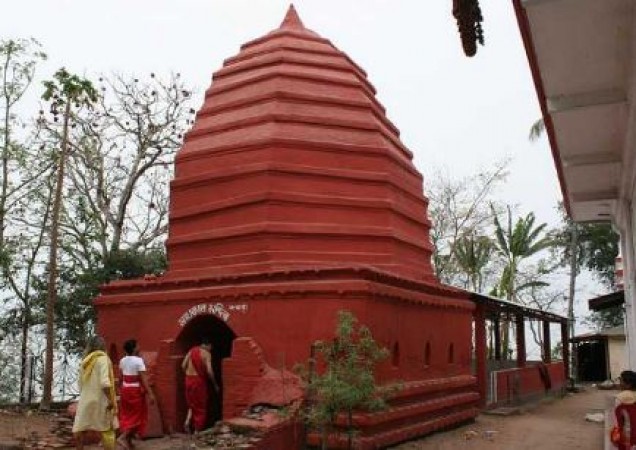
The Umananda Temple, also known as the Peacock Island Temple, is a mesmerizing shrine located on the Peacock Island in the mighty Brahmaputra River in Guwahati, Assam, India. Dedicated to Lord Shiva, this temple holds immense historical, religious, and cultural significance.
Nestled amidst the scenic beauty of the Brahmaputra River, the Umananda Temple is believed to have been built in the 17th century by the Ahom King Gadadhar Singha. It is said that the king was a devoted worshipper of Lord Shiva and constructed the temple to fulfill his spiritual aspirations. The island itself, which houses the temple, is believed to resemble the shape of a peacock, lending the temple its alternative name.
Also Read: Bumthang: A Journey Through Bhutan's Timeless HeritageSiddhivinayak Temple: A Divine Abode of Lord Ganesha
To reach the Umananda Temple, visitors have to take a boat ride from the mainland of Guwahati to the Peacock Island. The journey is enchanting; with the rivers gentle currents and the lush greenery on the banks creating a serene ambiance. As you approach the island, the sight of the temple's white structure against the backdrop of the blue sky and the river's shimmering waters is truly captivating.
Upon entering the temple complex, one is greeted by an aura of tranquility and spirituality. The main shrine, dedicated to Lord Shiva, is adorned with intricate carvings and sculptures. Devotees and tourists alike offer prayers and seek blessings from Lord Shiva, who is considered the presiding deity of the island. The temple also houses smaller shrines dedicated to various other Hindu gods and goddesses, further enriching the spiritual experience.
Also Read: Konark Temple: The Grand Chariot Of The Sun Unveiled
The Umananda Temple is also known for its breathtaking natural surroundings. The Peacock Island is home to a diverse range of flora and fauna, making it a paradise for nature lovers. Walking along the well-maintained trails on the island, visitors can spot various species of trees, flowers, and birds, including the colorful peacocks that lend the island its name.
The Umananda Temple and the Peacock Island are not only a popular pilgrimage site but also a tourist attraction. The peaceful ambiance and the panoramic views of the river and the city of Guwahati make it an ideal place for meditation and self-reflection. Many visitors spend hours sitting by the riverbank, engrossed in the beauty of nature and the spiritual energy of the temple.
Also Read: Historical Significance and Sacred Worship Method of Durga Temple Aihole
Another highlight of the Umananda Temple is the annual Shivratri festival celebrated with great fervor and enthusiasm. During this time, devotees from far and wide throng to the temple to participate in the festivities. The entire island comes alive with colorful decorations, devotional music, and chanting of hymns. It is an occasion filled with joy, devotion, and spiritual awakening.
Preserving the rich cultural heritage, the Umananda Temple has witnessed the passage of time and numerous historical events. It survived the massive earthquake that struck Assam in 1897 and has been renovated and restored over the years to maintain its architectural grandeur. The temple stands as a testament to the resilience of the people and their unwavering faith.
The Umananda Temple is not just a religious site but a haven of tranquility, spirituality, and natural beauty. Its location on the Peacock Island, surrounded by the mighty Brahmaputra River, adds to its allure. Whether you are a devotee seeking divine blessings or a traveler seeking solace, the Umananda Temple offers an unforgettable experience, leaving an indelible imprint on your soul.
Also Read: A wonderful journey through the history, significance and sacred worship of Akshardham
Know what is the history, importance and worship method of Sabarimala temple